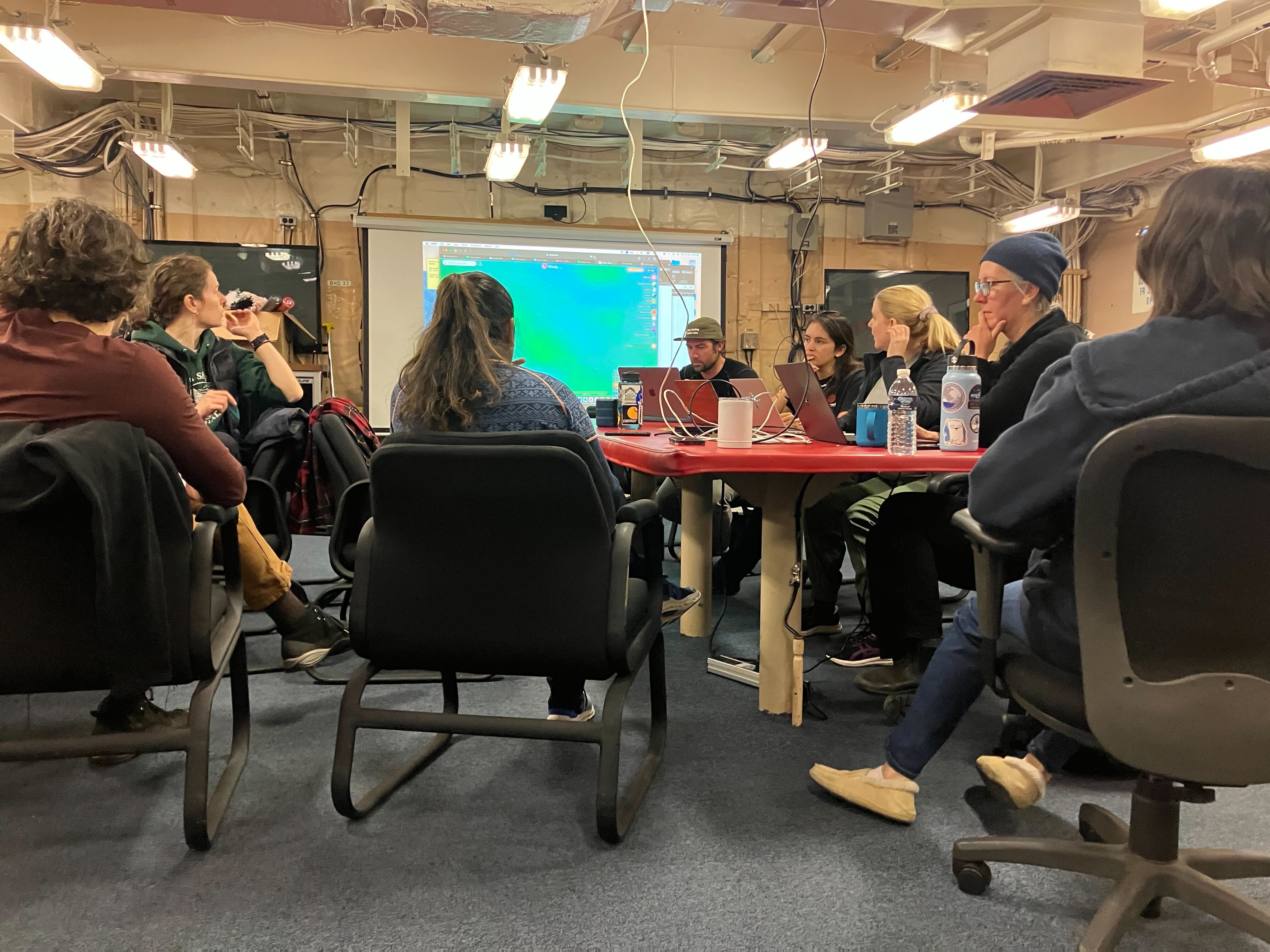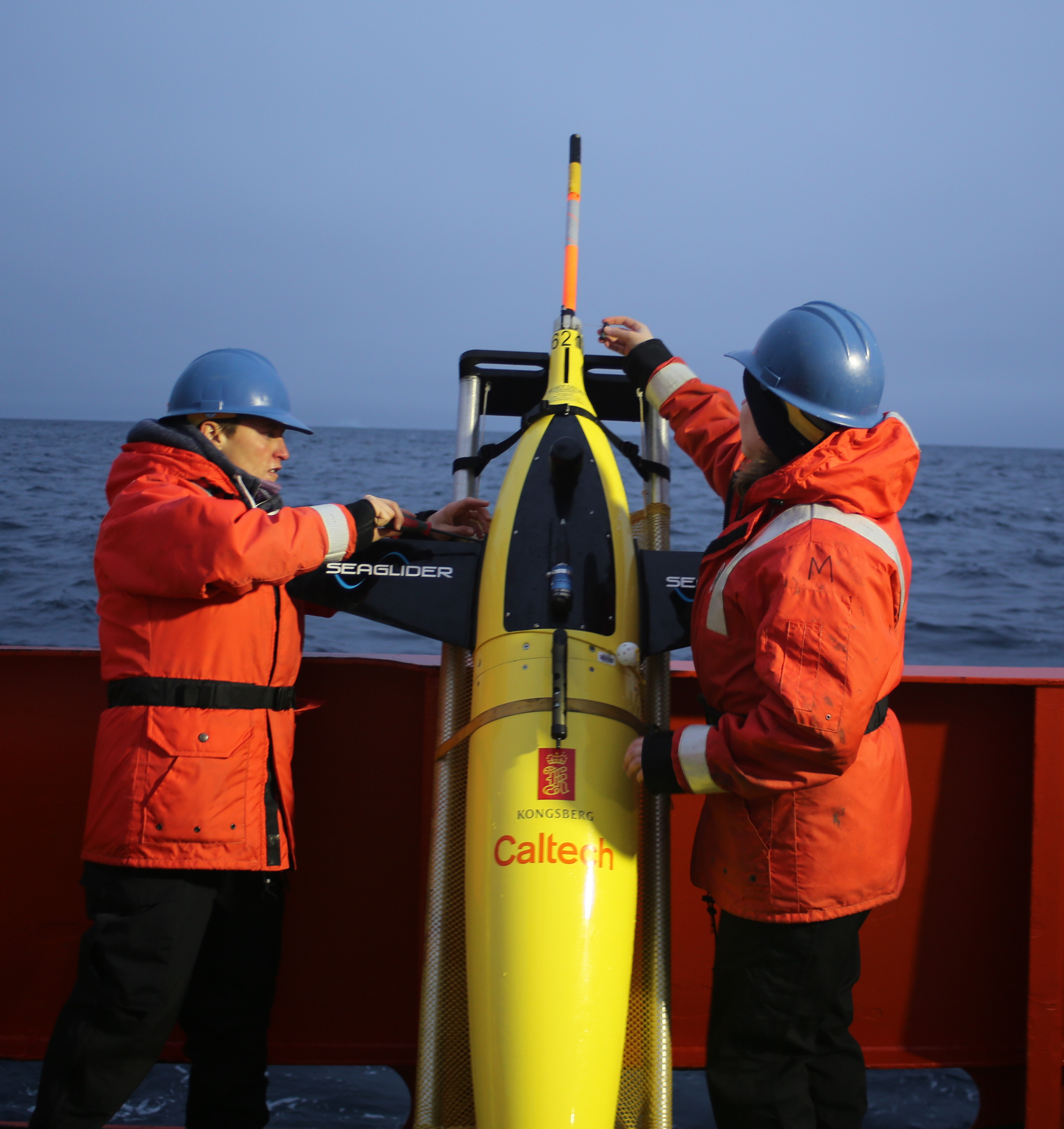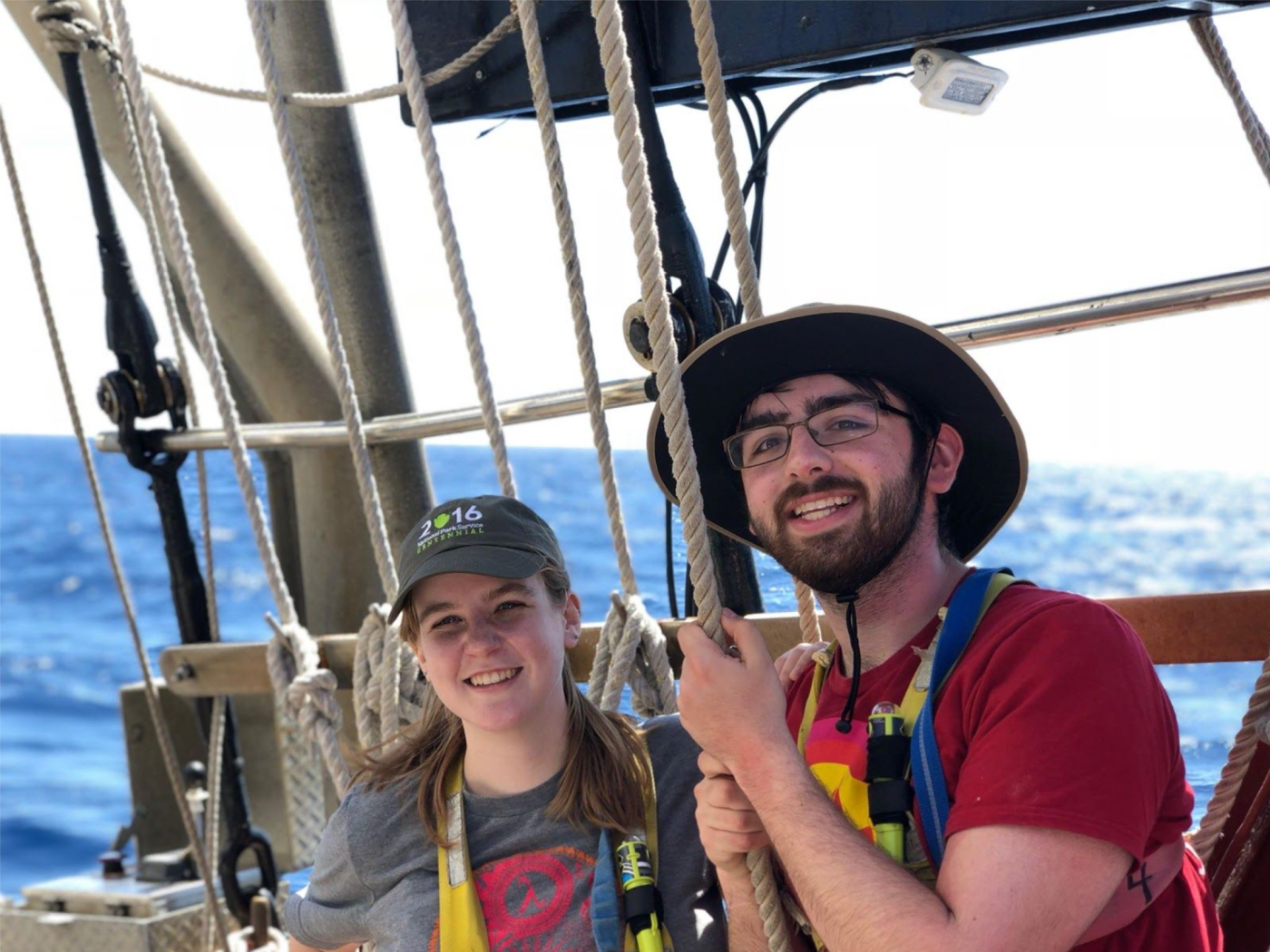Field Work
NSF/UNOLS/AICC Polar Chief Scientist Training Cruise
As part of the Polar Chief Scientist Training Program, I sailed aboard the USCGC Healy in October-November 2024. From our home port of Nome, Alaska, we traveled north into the Chukchi Sea and learned about the many different roles of a chief scientist, including building a science plan in rapidly changing conditions, moderating interpersonal dynamics, maintaining effective communication with the captain and crew, and organizing sustained and mutually beneficial research with Arctic community members.

GO-SHIP P02 Leg 2
I sailed aboard the RV Roger Revelle in June-July 2022 as part of the Global Oceans Ship-based Hydrography Investigations Program (GO-SHIP) transect of the North Pacific. Starting in Hawai`i and sailing to San Diego over five extremely wave-free weeks, we performed over 100 CTD stations, often down to 6000 meters depth. I helped operate and process data from the Lowered Acoustic Doppler Current Profiler (LADCP), which gives us data about the direction and magnitude of ocean currents.

Bellingshausen and Amundsen Seas
In January-March 2020, I was on board the RVIB Nathaniel B. Palmer helping to deploy gliders as a part of the Transport of the Antarctic Peninsula and Bellingshausen Sea - Antarctic Slope Current Origins (TABASCO) project. While on board, I also helped deploy biogeochemical-Argo floats and learned a lot about marine geochemistry from the rest of the science party, who were primarily part of the Thwaites Offshore Research (THOR) program. Ask me about how getting home from Antarctica in late March 2020 was sometime!

Florida Straits
My first exposure to observational oceanography came as a part of class taught by Andrew Babbin at MIT my senior year. During this class, we spent spring break sailing on the SSV Corwith Cramer learning about how data is collected and analyzed at sea. As a bonus, I got to collect data for my senior thesis on sea spray aerosol while on board. This experience revolutionized my understanding of what being a scientist can look like and is one of the reasons I pursued oceanography in graduate school.
